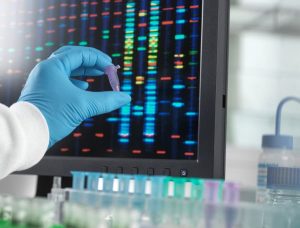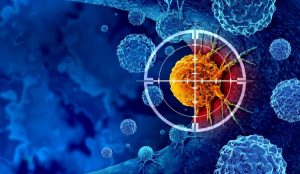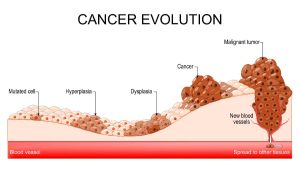
What Is Biomarker Testing for Lung Cancer?
Biomarker testing is the evaluation of samples of a patient’s tumor, blood, or both to identify the genetic mutations responsible for the development of cancer,
HIPAA Alert: Potential Data Breach Learn More
Questions on Oncology, Hematology and/or Infusion Clinical Services due to COVID-19 Crisis – CALL 833-698-1623
Important Information for Our Patients Regarding the Coronavirus.
RCCA Providing Area Cancer Patients with Access to Care During Coronavirus Outbreak
RCCA Offering Patients Virtual Visits During Coronavirus Pandemic
Early detection is key to treating prostate cancer. The sooner the cancer is diagnosed, the more options that are available for effective treatment. Blood tests, digital rectal exams (DREs), and imaging tests can be used to detect signs of prostate cancer. Once cancer is suspected, however, a prostate biopsy is necessary to rule out other causes and confirm the diagnosis.
Regional Cancer Care Associates (RCCA) provides prostate cancer treatment at more than 20 locations near you in New Jersey, Connecticut, Massachusetts, and the Washington, D.C., area. Here, we discuss what a prostate biopsy entails and what to expect during the procedure, which typically is performed by a urologist.

A biopsy is a type of diagnostic test used to identify the presence of disease, including cancer, in the tissues of the body. During the procedure, a doctor removes a small amount of tissue, fluid, or from the prostate. This sample is then studied under a microscope to look for abnormal cells and other indicators of cancer.
Most prostate biopsies are core needle biopsies, meaning that an instrument called a core needle is used to obtain the tissue sample. This type of needle has a hollow center that facilitates tissue collection. It can be inserted into the prostate through one of two different approaches:
In most cases, multiple samples will be taken to ensure accurate results. These samples will be sent to a medical laboratory for examination and testing.
The steps a patient will take to prepare for having a prostate biopsy will vary somewhat based on factors such as any medications he may be taking, his overall health, and the biopsy approach to be used/ The doctor will provide specific instructions on how to prepare. These instructions may include:
Patients should be sure to follow all instructions before their biopsy. This will ensure the most accurate results possible while minimizing possible side effects.
Prostate biopsies are typically performed by a urologist. The biopsy is an outpatient procedure, meaning the patient doesn’t have to plan for an overnight hospital stay. It typically does not involve sedation.
The patient is asked to put on a hospital gown before lying down on a procedure table. The urologist typically will then insert a transrectal ultrasound (TRUS) device into the patient’s rectum. This will allow the doctor to observe the prostate during testing. The doctor may also inject a local anesthetic near the prostate to numb it, reducing discomfort during the procedure.
Using the TRUS imagery for guidance, the urologist quickly inserts a thin needle into the prostate. When the needle is pulled out, it will contain a small cylinder or core of tissue. This process is repeated about 12 times in different parts of the prostate. The biopsy instrument is spring-loaded for fast insertion and removal. As a result, each sample causes only brief discomfort.
The entire biopsy procedure takes about ten minutes to complete. Afterward, the patient returns home while waiting for the laboratory to provide test results.
The patient may feel some soreness in the biopsy area following the procedure. There may also be some light bleeding from the rectum or a small amount of blood in the patient’s urine. This is normal and should stop within a few days. Seeing blood in the semen after ejaculation is also normal and may last longer, up to a few weeks. Patients should avoid heavy physical activity for 24 to 48 hours after the procedure to prevent heavy bleeding and to allow the site to heal properly.
Prostate biopsies carry little risk of complications. Nevertheless, patients should contact their doctor if:
Patients should also be careful to follow the doctor’s post-procedure instructions for keeping the biopsy site clean.
Biopsy samples are sent to a medical laboratory to be evaluated by a pathologist. The pathologist will examine the samples under a microscope to identify signs of cancer. If cancer is present, the pathologist may perform additional tests to learn more about the cancer’s characteristics, which can help a urologist or medical oncologist identify which treatment options may be most effective for the patient. The pathology report typically takes a few days to deliver but can take longer. The information provided may include:
Of course, the most important information provided in a prostate biopsy pathology report is whether cancer cells were found on any samples. If no cancer cells were found, the test is called negative. If cancer cells were found on one or more samples, the test is positive.
If cancer is found, a Gleason score or grade will be assigned to it. This is a numerical scale used to convey how abnormal the cancer cells look under a microscope. Higher-grade cancers look more abnormal and are also more likely to be aggressive. Gleason scores can be categorized as follows:
Some cancer care centers use grade groups instead of Gleason scores. These are reported on a scale of 1 to 5. As with Gleason scores, a higher-grade group indicates more abnormal cells and a greater risk of spread.
Cancer cells from prostate biopsies may also be tested to help determine the potential impact of different treatment options. The results of these tests will tell doctors whether certain targeted therapies, hormone therapy, or immunotherapy are likely to be effective against the patient’s cancer.
The pathology report may also contain other information about the cancer, including:
Regional Cancer Care Associates offers comprehensive cancer care at more than 20 locations across New Jersey, Connecticut, Massachusetts, and the Washington, D.C., area, allowing patients to receive treatment close to home. Contact us today to learn more.
For more information or to schedule an appointment,
call 844-346-7222. You can also schedule an appointment by calling the RCCA location nearest you.

Biomarker testing is the evaluation of samples of a patient’s tumor, blood, or both to identify the genetic mutations responsible for the development of cancer,

Medical research has made tremendous strides in improving how oncologists understand and treat cancer. One of the most exciting developments is the use of radiopharmaceuticals.

Prostate cancer is a common and fairly complex disease. Though it typically grows very slowly, there are times when prostate cancer can develop suddenly and

Regional Cancer Care Associates is one of fewer than 200 medical practices in the country selected to participate in the Oncology Care Model (OCM); a recent Medicare initiative aimed at improving care coordination and access to and quality of care for Medicare beneficiaries undergoing chemotherapy treatment.